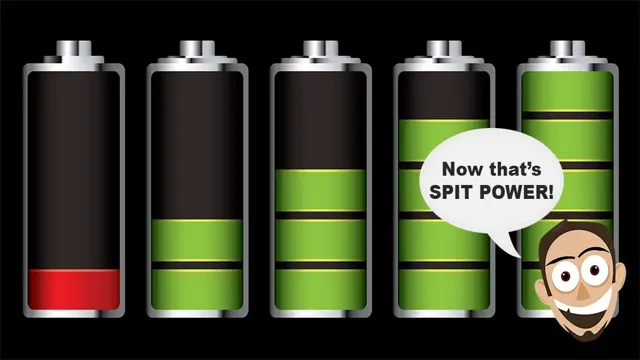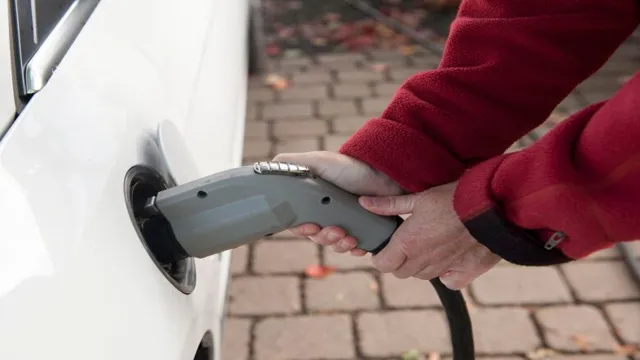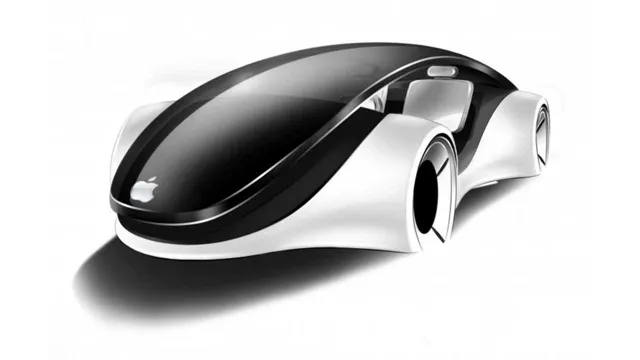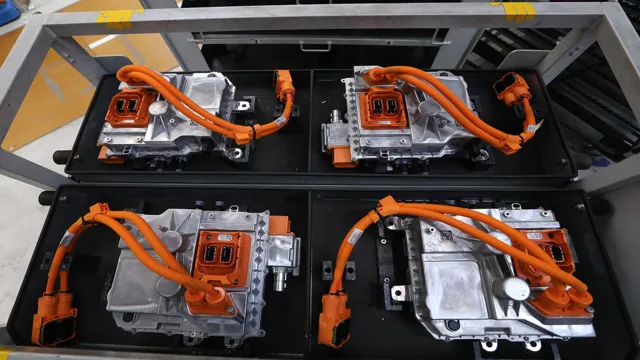The Shocking Truth About the Carbon Footprint of Electric Car Batteries – Exploring the Environmental Impact
Electric cars are becoming increasingly popular, and for good reason – they’re better for the environment and can save you money on fuel. However, many people are concerned about the carbon footprint associated with manufacturing and powering electric cars. One significant factor in this discussion is the batteries used in electric cars.
In this blog, we will be delving into the carbon footprint analysis of electric car batteries. We will explore the manufacturing of the batteries, the energy needed to power them, and what that means for the environment. By understanding the carbon footprint of electric car batteries, we can make more informed decisions about our transportation choices and their impact on the planet.
So, let’s dive in and take a closer look at electric car batteries and their carbon footprint.
What is the carbon footprint?
Electric cars have gained popularity in recent years due to their eco-friendliness and lower impact on the environment compared to traditional gas-powered cars. However, one aspect that is often overlooked is the carbon footprint of their batteries. While electric cars may emit less greenhouse gases while being driven, the production of their batteries requires a significant amount of energy and resources, resulting in a higher carbon footprint during the manufacturing process.
The main material used in electric car batteries is lithium-ion, which requires extensive mining and processing of raw materials that are then transported to factories for production. This process results in a higher carbon footprint, but the technology is rapidly advancing, making electric car batteries more efficient and eco-friendly. In addition, the use of renewable energy in manufacturing can also reduce the carbon footprint of electric car batteries.
Overall, it is important to be aware of the carbon footprint of electric car batteries and to strive towards more sustainable manufacturing processes.
Definition and explanation
Carbon footprint is a term that we often hear, especially when discussing climate change and environmental protection. But what is it, exactly? In simple terms, carbon footprint is the amount of greenhouse gas emissions produced by an individual, organization, or activity. These emissions come from sources like burning fossil fuels for energy, transportation, and industrial processes.
The most common greenhouse gas emitted is carbon dioxide, which is why it’s called a carbon footprint. By measuring our carbon footprint, we can understand the impact we are having on the environment and identify ways to reduce our emissions. It’s important to note that while we all have a carbon footprint, it’s not something that can be eliminated completely.
However, by making conscious choices and taking steps to reduce our emissions, we can lessen our impact and contribute to a more sustainable future.
Electric car batteries
Many people are turning to electric cars as a way to reduce their carbon footprint. However, there is some concern about the environmental impact of the batteries that power these vehicles. The truth is that while there are some environmental costs associated with producing electric car batteries, they are ultimately far less damaging than the pollution caused by traditional gasoline-powered cars.
The carbon footprint of an electric car battery is lower than that of a conventional car battery because it requires less energy to produce and is often made from more environmentally-friendly materials. Plus, electric car batteries have a longer lifespan and can be recycled, reducing the amount of waste generated. So, while there are still areas where improvements can be made, the adoption of electric cars and the batteries that power them is a step in the right direction towards a more sustainable future.
Composition and manufacturing process
When it comes to electric car batteries, there are various types and compositions used by manufacturers. Generally, the battery contains a cathode, anode, separator, and electrolyte, all enclosed within a casing. The cathode, which is typically made of nickel-manganese-cobalt (NMC) or nickel-cobalt-aluminum (NCA), is responsible for the flow of electrons through the battery, while the anode, typically made of graphite, stores the electrons.
The separator keeps the anode and cathode from touching, preventing short circuits, and the electrolyte carries ions between the two electrodes. The manufacturing process of electric car batteries usually involves several stages, including mixing the raw materials, coating the electrodes with chemicals, assembling the cells, and testing the final product for performance and safety. With advancements in technology, electric car batteries are becoming more efficient and durable, allowing for longer driving ranges and faster charging times.
As eco-friendly alternatives, electric cars and their batteries are essential for reducing carbon emissions and promoting sustainable transportation.
Emissions during production
Electric car batteries have become increasingly popular due to their potential for reducing emissions during car production. Unlike gasoline engines, the manufacturing process for electric car batteries involves fewer emissions, making them an attractive option for environmentally-conscious consumers. The production process typically involves creating a battery pack composed of numerous battery cells, which are then assembled into a unit.
These cells are made from materials including lithium, nickel, cobalt, and graphite. The production of these materials comes with its own set of emissions, but overall, the emissions generated during the production of electric car batteries are significantly lower compared to the emissions generated by traditional car manufacturing. By driving an electric car powered by a battery, motorists can reduce their carbon footprint and contribute to a more sustainable future.
Comparison with traditional car batteries
When comparing electric car batteries to traditional car batteries, the carbon footprint of the former is significantly lower. This is because electric car batteries use fewer raw materials in their construction, emit less pollution during production, and have a longer lifespan. Additionally, when the battery is no longer usable, it can often be recycled, reducing waste and further reducing its environmental impact.
In contrast, traditional car batteries contain toxic lead and acid and are often disposed of improperly, leading to environmental contamination. While electric car batteries do have some environmental impact during production, their benefits in terms of reduced emissions and resource usage make them a more eco-friendly option overall.
Carbon footprint of traditional car batteries
As the world becomes increasingly concerned with reducing carbon emissions, one industry that is often overlooked is the automotive industry. Traditional car batteries, for instance, have a significant carbon footprint when compared to other types of batteries. While lead-acid batteries, like the ones found in most gasoline-powered cars, are relatively cheap, they also release harmful toxins when they are disposed of improperly.
In contrast, electric car batteries, such as lithium-ion batteries, are much more efficient and have a lower carbon footprint. These types of batteries emit far fewer pollutants and are also recyclable. When compared side-by-side, the carbon footprint of traditional car batteries far outweighs that of electric car batteries.
As consumers continue to prioritize sustainability, it is clear that the automotive industry must make changes in order to keep up with the changing times.
Advantages of electric car batteries in terms of carbon footprint
When it comes to reducing our carbon footprint, electric car batteries have several advantages over traditional car batteries. Unlike traditional car batteries, which rely on fossil fuels to power the car, electric car batteries rely on electricity generated from renewable sources such as solar, wind, and hydroelectric power. This means that electric cars produce significantly less greenhouse gas emissions compared to traditional gas-powered cars.
For example, studies have shown that electric cars powered by renewable energy sources can reduce carbon dioxide emissions by up to 70% compared to traditional cars. Additionally, electric car batteries can be recycled, reducing the impact of battery disposal on the environment. Overall, electric car batteries offer a more eco-friendly solution to traditional car batteries, making them an attractive option for anyone concerned about reducing their carbon footprint.
Disposal of electric car batteries
When it comes to electric cars, people often talk about their reduced carbon footprint. But what about the carbon footprint of electric car batteries? Disposing of electric car batteries can actually be quite harmful to the environment if not done properly. These batteries contain heavy metals and other toxic materials that can contaminate the soil and water if not disposed of correctly.
However, there are ways to minimize the harm caused by electric car batteries. Many manufacturers have recycling programs in place to ensure that their batteries are disposed of responsibly. In fact, up to 95% of materials in electric car batteries can be recycled.
Additionally, some companies are developing ways to repurpose old electric car batteries for use in energy storage systems, further reducing their environmental impact. So while electric car batteries do have a carbon footprint, it’s important to remember that steps can be taken to mitigate their impact and move towards a more sustainable future.
Effects on carbon footprint
The increased production and use of electric vehicles have led to concerns over the disposal of spent batteries and their impact on carbon footprints. Despite being an eco-friendly alternative, electric car batteries contain hazardous materials that pose a threat to the environment. Proper disposal is vital to reduce the impact of the batteries on the carbon footprint.
The recycling of these batteries is a promising approach to minimize the negative environmental impact and conserve resources. Lithium-ion batteries that power electric cars can last for ten years or more before needing replacement. Reusing and recycling these batteries at the end of their lifespan can significantly reduce the carbon footprint.
Additionally, repurposing them for other uses such as energy storage in homes or renewable energy systems can minimize the number of batteries that require disposal. By improving the disposal and recycling methods for electric car batteries, we can ensure a sustainable and green future.
Future prospects for recycling and reducing impact
As the use of electric cars becomes more widespread, the disposal of their batteries becomes a concerning issue. These batteries contain toxic substances and rare metals, which can be harmful to the environment if not recycled or disposed of properly. However, the good news is that the industry is already working on solutions to reduce the impact of these batteries on the environment.
Some companies are implementing closed-loop recycling systems, where the materials in the battery are reused to make new batteries. This not only reduces waste but also decreases the need for mining new materials. Moreover, as the technology advances, electric car batteries are becoming more efficient and lasting longer, which further reduces their impact on the environment.
So, while the issue of disposing of electric car batteries is not yet fully resolved, we can anticipate positive changes in the future that will make this process more sustainable.
Conclusion
In conclusion, the carbon footprint of electric car batteries is a complex issue that requires careful consideration. While it is true that the production of these batteries results in some greenhouse gas emissions, the long-term benefits of reducing our reliance on fossil fuels and cutting down on tailpipe emissions cannot be overstated. At the end of the day, it’s all about finding the right balance between environmental responsibility and practicality.
So the next time someone tells you that electric car batteries are bad for the environment, just remind them that a little bit of carbon footprint now can lead to a much bigger, greener footprint down the road. It’s all about looking at the big picture and making intelligent choices for the future.
FAQs
What is the carbon footprint of manufacturing an electric car battery?
The carbon footprint of manufacturing an electric car battery is dependent on several factors such as the energy source used, the type of battery, and the location of production, but it generally ranges from 50 to 200 kg CO2e/kWh.
How does the carbon footprint of an electric car battery compare to that of a traditional gasoline car?
While an electric car battery has a higher carbon footprint during its manufacturing phase, it has a much lower carbon footprint over its entire lifecycle compared to a traditional gasoline car, mainly due to the absence of tailpipe emissions.
Are there any efforts being made to reduce the carbon footprint of electric car batteries?
Yes, many companies are investing in developing batteries with lower carbon footprints, using recycled materials, and renewable energy sources to power the manufacturing process, as well as optimizing the supply chain and increasing the lifespan and recyclability of batteries.
How can consumers reduce the carbon footprint of their electric car battery usage?
Consumers can reduce the carbon footprint of their electric car battery usage by charging their vehicles with renewable energy, avoiding excessive acceleration and high speed driving, driving conservatively, and properly disposing of used batteries for recycling.






